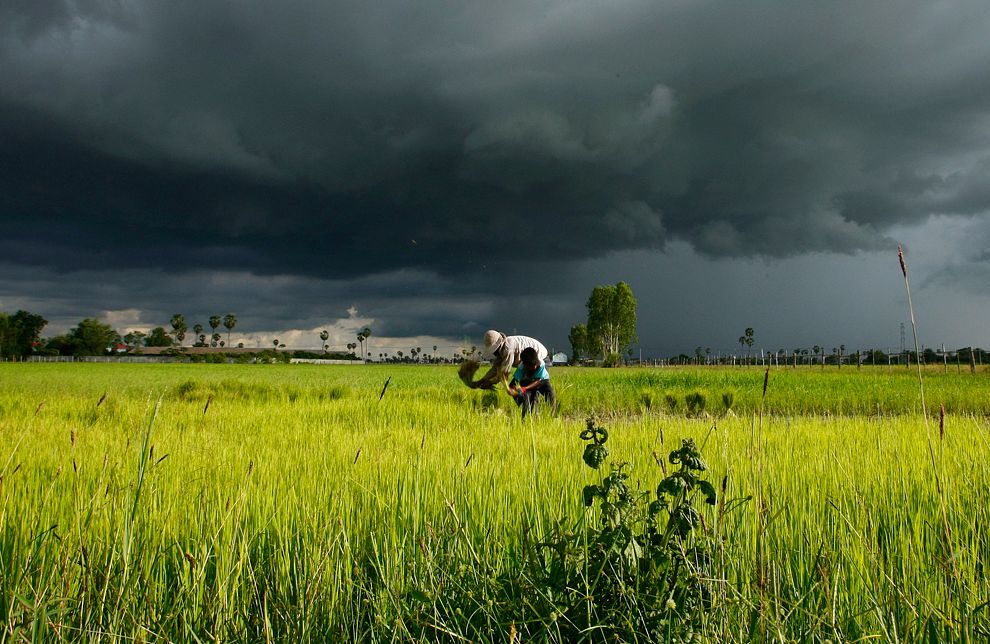Bin-Mausam Barish and my heart: Torn between enjoying Delhi rains as a respite and agricultural crisis at home
I wrote this in March and kept it in my inbox. But when it started raining again, I had to get back and put it somewhere (though it is a little dated).
It was Saturday evening. Lounging in the small balcony of my rented house in Delhi, I posted an Instagram video and expressed my love for bin-mausam-barsaat (unexpected rains). A few hours later, during one of our routine calls, my mother expressed her distress about the same rain. My parent’s home is in Haryana, roughly 80 kms from my Delhi house. The wheat crop, which is approaching harvest, has become challenging to reap because the rain bent the plants. She was also worried about waterlogging and reduced yield if the rain continued. My neighbour’s mustard crop which was cut but not gathered and transported is now lying drenched in wet soil. However, this year her tone wasn’t that of surprise – as if she got used to it. And with this 5 minute conversation, I, a development sector professional, was brought back to reality.
Unpredictable Weather And Crop Yield
The impact of unpredictable weather on agriculture has been a major concern for farmers in India, especially in states like Haryana, where agriculture is a major source of income. Over the past few years, Haryana has experienced frequent and unexpected weather changes, leading to significant losses in crop yields and income for farmers.
In 2022 it was an unexpectedly hot March which coincided with a maturing wheat crop, heavy rainfall in September and October as the paddy was nearing harvest; both events increased input cost and reduced crop production. In March 2023 as well, IMD has forecasted strong wind and hail that may damage plantation, horticulture and standing crops. Leading to a delay in harvesting of crops in Punjab and Haryana as well as in some other parts of the country, it will again negatively affect the yield.
Earlier this March, when I visited my parent’s house my neighbours and cousins whose main occupation is farming expressed their regret on not being skilled enough for an alternative source of income. According to a report published by the Indian Council of Agricultural Research (ICAR), Haryana witnessed a decline in wheat production by 20% in the year 2018-19 due to unseasonal rainfall and hailstorms. Similarly, in the year 2020, the state experienced a significant loss of crop due to heavy rains and hailstorms during the harvesting season. The rainfall led to the destruction of the standing crop, resulting in a loss of revenue for farmers. In addition to rainfall, extreme weather events such as heatwaves, droughts, and floods have also impacted the agriculture sector in Haryana. In the year 2019, the state witnessed a severe heatwave, leading to a loss of 30% in the cotton crop production. In 2020, the state witnessed floods in several districts, leading to a loss of crops and damage to infrastructure.
A study published in the journal Environmental Research Letters found that climate change could lead to a decline in wheat and rice yields in India by 6% and 8%, respectively, by 2030. Another study by the International Food Policy Research Institute (IFPRI) stated that climate change could lead to a decline in agricultural productivity by 10% by 2030 in India.
What Are The Gaps?
Although there is no dearth of schemes on government websites to promote sustainable and resilient agricultural practices, but are we expecting farmers to check the websites while dealing with the crop situation at hand? The government has launched several initiatives and schemes such as the National Adaptation Fund for Climate Change (NAFCC) and the Pradhan Mantri Fasal Bima Yojana (PMFBY) to support farmers in coping with the impact of climate change on agriculture.
There are several reports, including the ‘Situation Assessment of Agricultural Households and Livestocks Holdings’ by NSS that showcase the lack of awareness of the government schemes and programs amongst farmers. According to a report titled ‘Environment & Social System Assessment’, farmers have inadequate awareness about crop insurance and in its current form, PMFBY design does not have an interface with farmers resulting in mistrust, providing wrong information and discrediting the scheme. This stems the need of not just educating the farmers but also strengthening the institutional capacity of government agencies and other stakeholders involved in the implementation of agriculture programs and schemes.
While awareness and scheme implementation is a challenge, many small and marginal farmers in Haryana also face difficulty in accessing credit and other financial services which limits their ability to invest in sustainable agriculture practices and technologies. Haryana is a water-stressed state and prone to extreme weather events such as droughts, floods, and heatwaves. Climate variability and unpredictability pose a major challenge for farmers in the state, and there is a need to develop climate-resilient agriculture programs, practices and technologies.
What Can Be Done?
It is crucial for the government and other stakeholders to work towards building resilient and sustainable agriculture systems that can cope with the impact of climate change on agriculture. The climate smart-agricultural practices like conservation agriculture, crop rotation, intercropping, and agroforestry need to move beyond conference halls and papers and reach all small and marginal farmers. Large-scale and honest farmer education programs on these will not only improve soil health and reduce greenhouse gas emissions, but also enhance the resilience of crops to extreme weather events.
Like in any other project in the sector, after awareness comes access. Farmers need access to affordable climate-resilient infrastructure such as irrigation systems, greenhouses, and weather monitoring systems to cope with the impact of climate change on agriculture. Farmers also need an assurance of sustainability and financial security to continue adapting climate resilient practices which can be done with better implementation and marketing of crop insurance and institutional credit. We need more investment and commitment from governments and CSRs in this field.
